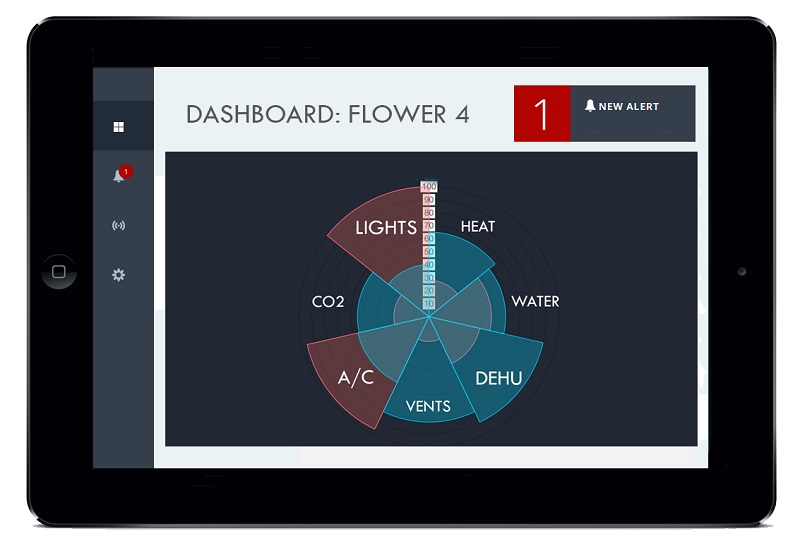Croptimize wants to lower your cannabis grow’s energy bill
Blunt Network spoke to Kevin Mayer, CEO of the Colorado-based, energy efficiency start-up Croptimize.
Blunt Network: What’s the problem that you’re trying to solve?
Kevin Mayer: We’re working to improve the energy usage of indoor cannabis growers. Modern cannabis cultivation is incredibly energy dependent; in fact energy is usually the biggest operating expense of any cultivation facility. Croptimize software facilitates energy efficiency, ultimately enabling growers to realize significant cost savings and ensure their profitability.
Blunt Network: How does it work?
Kevin Mayer: It starts with circuit level monitoring. Our software can infer exactly where and when growers are using energy. From there we understand exactly what each unique grow’s energy profile is and begin to look for opportunities to improve it.
We start to realize savings first through operational adjustments, targeting time of use and peak demand cost drivers.
Beyond that, we curate analysis for device switching: Lights, AC and dehumidification are the big energy hogs in any grow. We also consider alternative power sources like solar and on-site battery storage.
Our hardware partners are controllable from within our software – growers can define the climate thresholds they prefer; then Croptimize’s algorithms manage the systems in the most efficient way possible.
Blunt Network: So you have a technology but you also provide a service where you’ll connect companies to more efficient alternatives?
Kevin Mayer: Yes, exactly. The service is packaged in an application — it’s mathematics derived from a rich understanding of efficiency in commercial industrial applications. Solutions present in the form of operational adjustments or hardware system. We provide access to both.
Blunt Network: What are two different grow situations that you encounter?
Kevin Mayer: No two grows are the same. You might have a 10,000 square foot building that has five flower rooms with unique micro-climates. On the other hand, you might have a 10,000 square foot room providing a single climate. The energy profiles are dramatically different as are efficiency strategies.
Right now it’s (about) grower preference. There’s really no standard. We’re starting to see how different methodologies scale from a production aspect, but there’s not a lot of perspective in this particular industry into the energy footprints is for the different configurations of grows, much less ways to improve each.
Blunt Network: What are growers currently paying?
Kevin Mayer: Each grow is different, but generally a 10,000 square foot facility will spend $200,000 a year on energy.
Based on our experience in other commercial and industrial verticals, we can save 30 to 40 percent on total energy spend.
Blunt Network: Where are you in terms of rolling out your business?
Kevin Mayer: We are looking to officially introduce our solution later this year. We’re in Beta with a couple of great grows where we are validating the technology and refining our user experience.
Blunt Network: What’s your background?
Kevin Mayer: I’ve spent the last six years in the smart home, in product management and business development. I lived in the world of Internet of Things device connectivity and user experiences around energy efficiency, which lends well to this project.
Blunt Network: How are grower relationships with energy companies?
Kevin Mayer: I’d say it’s improving. Growers historically had to tread lightly around energy providers. Now that it’s a legal industry the relationship has changed — both sides are learning about the challenges their counterparts face and are beginning to work together for the greater good.
Utilities are committed to provide consistent, affordable energy to growers as well as their non-grow neighbors. They are helping the industry by promoting efficiency through rebate programs and working with new facilities to plan effectively. But there are still gaps in the relationship; it will take time and knowledge sharing.
Blunt Network: Who do you consider your competitors?
Kevin Mayer: At a macro level, substitutes to warehouse cultivation will disrupt the industry to some degree. Greenhouses with supplemental climate are becoming more prevalent. They perform well from an energy standpoint, but are expensive to build and some growers argue product quality suffers.
Otherwise, there are quite a few environmental control systems out there. Argus, Priva, AgroTech – they are experts in climate management and large scale automation. Some elements of energy efficiency follow their primary value in environmental control and process automation.




